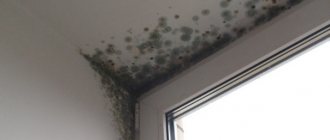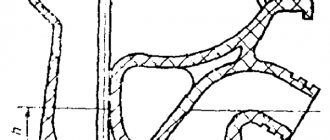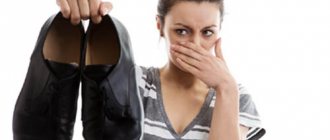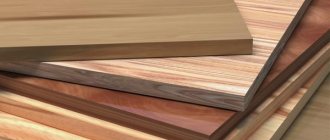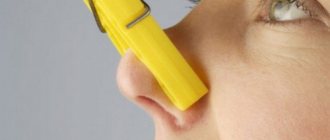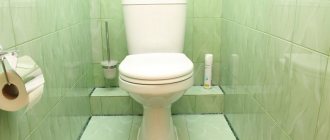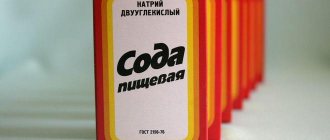Where is Chlorhexidine used?
The pharmaceutical product is used for the treatment and prevention of diseases caused by microorganisms sensitive to Chlorhexidine.
Depending on the concentration of the substance, the medicine can be used in the treatment of various pathologies.
After operations, in order to prevent infectious pathologies, doctors resort to using a pharmaceutical solution.
Chlorhexidine is often used for dental purposes for the treatment of dentures. In some cases, medication is used to treat periodontitis, stomatitis, and they are used to rinse the gums.
The medicine is used in:
- Urology
- Gynecology
- Surgery
What is Chlorhexidine used for?
An aqueous solution is prescribed to be taken in the following cases:
- cervical erosion;
- for the prevention of syphilis, genital herpes and other vaginal diseases;
- disinfection of dentures, disinfection of wounds;
- various diseases of the oral cavity.
An alcohol solution is used to treat hands and medical devices before surgery. The solution is also used to treat the working surface of medical equipment.
Vaginal suppositories are effective for the following conditions:
- in order to prevent infections that can be transmitted as a result of unprotected sexual intercourse;
- bacterial vaginosis;
- prevention of inflammation and infections before surgery, childbirth or abortion.
Contraindications
Chlorhexidine is contraindicated:
- In case of hypersensitivity to the components of the drug
- People suffering from dermatitis
- Do not use together with other antiseptics, for example, with hydrogen peroxide
- For ophthalmic use, rinsing the eyes with this product is prohibited.
- For disinfection of the surgical field
- After intervention on the auditory canal and central nervous system
It is important to know that the pharmaceutical product should be used with caution when treating children.
How to get rid of unpleasant foot odor?
The skin of the feet contains a large number of sweat glands that produce sweat. But sweat itself does not have a pronounced odor. An unpleasant odor from sweat appears due to the rapid activity of bacteria on the skin. This leads to the main rule - you need to wash your feet with soap every day and then dry them with a towel.
If a person has excessive sweating of the feet, special means can be used. For example, immediately after taking a shower, you can apply a small amount of talcum powder to your feet. If the feet sweat a lot during the day, and a person needs to change shoes at work or the gym, it makes sense to carry antiseptic products for treating the skin of the feet.
So it offers consumers disinfectant wipes “Septolite Antiseptic Napkin” and disinfectant “Septolite Antiseptic”. These tools perform several functions at once:
- Disinfect the skin - kill microorganisms (including fungus) located on the skin of the feet;
- Cleanses the skin of impurities;
- Eliminates unpleasant odor.
In addition, when dealing with unpleasant foot odor, you should choose your socks more carefully. Preference should be given to socks made from natural fabrics, as your feet will sweat less in them. You should also make it a habit to wear fresh socks every day.
Brief instructions for use
To prevent sexually transmitted diseases, after unprotected sexual intercourse, after a maximum of 2 hours, 2-3 ml of a 0.5% solution should be administered into the urinary canal of a man, 1 ml into the canal for women and 5-10 ml into the vagina. You can treat skin areas near the genitals with the product. After administering the drug, try to postpone urination for 2 hours.
Your doctor should tell you about douching for gynecological diseases.
For sore throat, rinse the mouth with 0.5% or 0.2% Chlorohexidine solution.
For inflammatory pathologies of the urinary tract, it is necessary to inject 2-3 ml of 0.05% of the product into the urinary canal.
Before using the drug, you should consult your doctor.
How to treat odor
During the use of shoes, various types of odors begin to emanate from them. It all depends on how carefully you wear it and the conditions in which it is stored.
From sweat
The smell that appears after sweating can be eliminated with improvised means and specialized preparations. The use of absorbents helps eliminate excess moisture.
From the smell of cat urine
The means at hand will help you cope with the problem - soda, glycerin, soap. Pet stores sell special devices that absorb urine odor.
From dampness
Washing with laundry or any other soap will help get rid of the musty smell. To avoid dampness, the product is dried after each wear.
From mothballs
In this case, the sun and fresh air will help. Also, shoes are packaged in plastic bags along with sprigs of dried lavender or any other plant with a strong odor. The smell of mothballs is eliminated with soda and activated carbon.
From the smell of glue
The best way is ventilation. The product can be left in the fresh air until the smell is completely eliminated.
From vinegar
Soap, powder, alcohol or soda helps with the “sour” smell.
Where to put candles
Depending on the type of disease, the method of administering Chlorhexidine suppositories can be different: rectal or vaginal.
But it is important to understand that the use of suppositories is only permissible as prescribed by a doctor.
Before using the suppository, you need to wash and dry your hands well, then you need to remove it from the package and insert it into the vagina in a lying position.
To avoid leakage of the drug, do not rush to get out of bed.
Chlorhexidine suppositories help well with thrush and cystitis.
How to properly disinfect
An important step in shoe care. Disinfection is necessary so that a person does not encounter a fungus and, as a result, a protracted treatment.
It is recommended to treat shoes after each wear. This rule is especially important in hot weather.
"Mikostop"
Processing is usually carried out using multifunctional tools. But if they do not show the desired result, they resort to more narrowly targeted drugs. For example, Mycostop has a good effect.
Why is Chlorhexidine better than peroxide?
- Hydrogen peroxide and Chlorhexidine are antiseptics. Medicines differ in their spectrum of effects and medicinal properties.
- Hydrogen peroxide, unlike Chlorhexidine, is available in only one dosage form, which is not very convenient.
Chlorkesidine suppositories are used for the treatment of gynecological and urological pathologies.
Both products disinfect wounds and abrasions well.
Chlorhexidine has a wider range of therapeutic effects; it is used to treat the hands of the surgeon and nurse before surgery, and it is also used in gynecology.
How to quickly get rid of it using folk remedies
Simple methods using available materials help solve the problem.
Citrus peel
The simplest, yet most effective method. The peel of a peeled orange can not only eliminate unpleasant odors, but also scent shoes. For this purpose, the peel of orange, lemon, lime and other citrus fruits is used.
Activated carbon
A method that involves the simplest steps. 2-3 tablets of activated carbon are placed in each pair. As a rule, this is done at night.
Alcohol solution
A liquid diluted with water will do. The cotton wool is soaked in the solution, after which the inside of shoes, sneakers and other products is treated.
Talc
There are 2 options for using the powder:
- application to feet;
- Sprinkling the inside of the shoes.
In the first case, talc is applied to the feet before putting on shoes. In the second, the internal parts are treated with sprinkles. For severe sweating, both options are combined.
Tea tree oil
Another effective remedy to help eliminate stink from shoes. The walls are treated with this product. Each pair will need 3-4 drops. Essential oil has an antibacterial effect that lasts throughout the day.
Sage and lavender
Dry crushed sage and lavender are placed in a linen bag. If the branches are whole, they are placed inside the shoes. The procedure is done at night. The reception has a disinfecting effect. In the morning there will be no trace of the smell.
A special solution is prepared based on the product. 20 drops of iodine are dissolved in 1 liter of water. After wiping the inside of the shoe with soapy water, it is treated with a cotton pad soaked in an iodine solution.
Used as an absorbent agent. 1 tbsp. l. poured into each pair and left overnight. In the morning, the spilled salt is collected with a vacuum cleaner and wiped with hydrogen peroxide.
Alum
The product in powder form is poured inside the shoe under the lining. In the morning, excess is removed with a napkin. The powder that is under the lining is not removed, as it acts as a deodorant.
The powder absorbs not only foreign odors, but also moisture. Just as in the case of alum, soda is poured under the lining overnight. After 12 hours, the powder is removed and the surface is treated with alcohol.
Alcohol
Medical alcohol will help disinfect the surface and remove the smell of sweat. One of two application options is selected. Alcohol is poured into shoes or boots, and socks are put on the feet. The person should be wearing shoes until the alcohol has completely evaporated.
Another option for using medical alcohol is possible. The liquid is poured into a spray bottle, with which the inside is sprayed. Regardless of the chosen method of control, after the procedures, a pair of shoes is aired. Alcohol is replaced with vodka.
Cat litter
The odor elimination method is suitable for sneakers, boots and boots. The cat litter is poured into a sock that is tied tightly. Overnight, the granules absorb excess moisture, and with it an unpleasant odor.
Green tea
To carry out the procedure you will need green tea bags. Tea can not only remove an unpleasant odor, but also replace it with a light aroma.
Potassium permangantsovka
The solution is prepared similarly to iodine, only the base contains potassium permanganate. The resulting liquid should have a rich pink color. The inside is wiped with a cloth soaked in water.
Hydrogen peroxide
It can be used independently or as a final cleansing step after using other methods of eliminating unpleasant odors. Suitable for shoes if the inside is made of light material. Hydrogen peroxide can discolor dark surfaces.
Vinegar
Simultaneously with the appearance of an unpleasant odor, the development of a fungus is diagnosed. Vinegar essence will help cope with two problems. The liquid disinfects the surface and refreshes the product.
Bay leaf
You will need dried crushed leaves. The powder can be prepared independently or purchased at grocery stores. A little mixture is poured into the shoes. In order for the method to give maximum results, the bay leaf is left in the product for a whole day. You can also place 2-3 leaves under the insoles before going out.
Cold
The method saves you from unpleasant odors both in winter and summer. In winter, the boots are taken outside and left there for the whole day. In summer, shoes are wrapped in plastic bags and placed in the freezer.
The method of combating the smell of sweat using low temperatures is not suitable for varnished ones, as the material will become covered with cracks.
Boric acid
Another absorbent that serves as an excellent alternative to talc, salt and soda. It is important that the product is well crushed. The less the powder granules are released, the better they absorb the aroma.
Tea bags
People experience unpleasant odor from their boots when wearing ankle boots. Because the legs are in a closed state and the aroma arises. Therefore, people use the trick of placing tea bags inside their shoes before wearing them the next time.
How to eliminate shoe odor associated with medical problems
If your feet and shoes stink for health reasons, it is advisable to consult a dermatologist before getting rid of the smell. The doctor will prescribe effective remedies and give recommendations.
When the problem is caused by sweating feet, in addition to washing with cold water 2 times a day, special deodorants and pharmaceuticals help:
- Teymurov pasta;
- "Formagel";
- burnt alum;
- zinc ointment.
How to get rid of foot odor caused by excessive sweating:
- Among folk remedies, oak bark baths are considered the most effective;
- you can add a small amount of starch to your socks;
- if a fungus appears, consult a dermatologist, only then purchase targeted products;
- sometimes hyperhidrosis is associated with hormonal imbalances or stress.
Prevention
Proper shoe care will protect you from various problems:
- After each wearing of shoes, ballet flats, sneakers, boots, the inside is washed.
- Boots should dry well.
- Insoles are changed as needed.
- For preventive purposes, the inside of the shoe is treated with alcohol.
- If the products are heavily soiled, wash them by hand or in a machine, unless this is contraindicated by the material.
If you do such actions regularly, the unpleasant odor will not become a serious problem for a person. Proper care will protect against fungal diseases. And the pair itself will last longer.
Source
Rules for eliminating unpleasant odor in shoes
We have covered many methods on how to remove odor from leather shoes or a pair made of fabric. But it is important to follow a few more recommendations so that the treatment gives positive results.
Temporarily suppressing the smell
There are situations when there is no way to remove the smell, you can only kill it. Then ground coffee beans come to the rescue. Place them in a cloth bag or cotton sock, but not in your shoe, to prevent the coffee from staining the fabric. Leave it overnight.
Looking for a replacement for an electric shoe dryer
When there is no electric dryer in the house or it is out of order, you can use other household electrical appliances.
- Shoes with low tops can be attached to the fan grille with homemade double-sided hooks.
- Some people insert a vacuum cleaner tube inside the shoe, turning it off from time to time.
- Finally, you can use a hair dryer, bringing it no closer than 25 cm to the inside of the shoes. Do not turn on the hot air and do not dry wet shoes in this way. Be patient, this is not a quick method.
We take into account the material from which the shoes are made
When cleaning and drying, consider the material the shoes are made from.
- Leather boots should not be heated because they will wrinkle and lose their shape. When drying them outdoors and storing them, newspapers or foam are placed inside.
- Sneakers and sneakers made from textiles can be machine washed, but should not be dried in the sun to prevent stains from appearing on the fabric.
- Nubuck and suede dry naturally; you can use an electric dryer, but with caution.
- Rubber boots are the only shoes that are recommended to be placed on the radiator.
Choosing the right way to process shoes
Treatment with vinegar and alcohol is not suitable for insulated shoes lined with natural fur or wool.
We carefully treat the shoes with the chosen product
Cover even hard-to-reach areas with cleaner. If possible, clean the inside of your shoes with the same composition. Do not mix different smells, so as not to aggravate the problem instead of solving it.
Infections caused by antibiotic-resistant microflora represent an ever-growing threat in both hospital and community settings. Nosocomial infections lead to a decrease in the effectiveness of therapy, an increase in the duration of hospitalization and an increase in mortality.
Chlorhexidine bigluconate was developed in Great Britain in 1950. It is the first internationally recognized antiseptic for skin and wounds. One of the advantages of chlorhexidine, in addition to its pronounced antimicrobial effect, is its ability to bind to various biological substrates while maintaining its antibacterial activity, and then be slowly released, which leads to the preservation of effective concentrations of the drug. To date, there are no reports of resistance to chlorhexidine, despite more than 60 years of active use of the drug in the clinic. Chlorhexidine gluconate remains important in the prevention of nosocomial infections.
Widespread use of antiseptic methods for the prevention and treatment of infections followed the publication of Joseph Lister's The Antiseptic Principle in Surgical Practice in 1867. At the same time, “Lister’s antiseptics” met ardent opponents, whose main argument was the toxicity of the antiseptic they used (carbolic acid). Despite the availability of numerous antiseptics, the question of the safety and effectiveness of this group of drugs remains constantly relevant. The “longevity” of chlorhexidine and the prospects for its further use as one of the most powerful antiseptics widely used in clinical practice is a pressing issue for clinicians.
A cationic detergent (detergent), later named chlorhexidine, was synthesized during the development of antimalarial drugs in 1947. This compound has bactericidal antimicrobial activity, especially against gram-positive microorganisms. Of the 10,040 compounds, the first to enter the market was chlorhexidine gluconate, registered in 1954 by Imperial Chemical Industries Co.LTD (UK) as “Gibitan” - the first internationally recognized antiseptic for the treatment of wound surfaces and skin. In 1957, only 3 years after entering the market, the indications for its use were expanded to include not only skin treatment, but also use in ophthalmology, urology, gynecology and otorhinolaryngology. In 1959, chlorhexidine began to be used to control bacterial plaque, leading to its widespread use in dentistry. Currently, in clinical practice, chlorhexidine is preferred not only when treating the skin (hands, surgical field), but also as an oral antiseptic, including for the prevention of nosocomial infection. The most commonly used concentrations are 0.2% and 0.12% solutions. In addition to its effect on plaque and gum condition (gingivitis), chlorhexidine is effective in the prevention and treatment of caries, secondary infections after dental procedures or implant placement. Chlorhexidine reduces the bacterial load and the risk of bacteremia after dental procedures. It is also used in the treatment of recurrent atrophic stomatitis and stomatitis associated with the installation of dentures, primarily in groups of patients with orthodontic appliances and immune disorders. One of the main advantages of chlorhexidine, in addition to its powerful antimicrobial effect, is its ability to retain its antimicrobial activity when bound to various substrates. At the same time, it is released slowly while maintaining an effective concentration. This property is known as substantiveness. Chlorhexidine is not susceptible to blood, pus, or saliva. Chlorhexidine is pharmaceutically incompatible with soap and detergents (for example, those containing lauryl sulfate), alkalis and other anionic compounds (colloids, gum arabic, carboxymethylcellulose), and iodine. Compatible with ethyl alcohol, benzalkonium chloride (contained in contraceptives for local use Pharmatex and Benatex). Ethanol enhances the effectiveness of the drug. The bactericidal effect increases with increasing temperature. At temperatures above 100°C, the drug partially decomposes. Used in a neutral environment; at pH 5-8 the difference in activity is small; at pH above 8 it precipitates. The use of hard water reduces bactericidal properties. Compatible with drugs containing a cationic group (benzalkonium chloride, cetrimonium bromide).
The unique combination of properties of chlorhexidine also determines the variety of dosage forms.
Chlorhexidine is available in the following forms: • 20% concentrated solution – intended for dilution before use, used in medical institutions; • 0.05% solution in plastic and glass bottles of 70 and 100 ml - used without dilution, including at home; • Vaginal suppositories (suppositories) “Heksikon” containing 0.016 g of chlorhexidine, 1 or 10 suppositories in a package; • Vaginal suppositories (suppositories) “Heksikon D” containing 0.008 g of chlorhexidine – intended for children, 10 suppositories per package; • Gel containing 0.5% chlorhexidine. Chlorhexidine is included in the following preparations: • Solutions for mouth rinsing for dental diseases and manipulations (tooth extraction, opening of abscesses, professional cleaning, etc.) – Elgidium, Amident, Eludril; • Gels for gums, intended for the treatment of dental diseases and pain relief in the oral cavity (for example, when getting used to dentures), one of the components of which is chlorhexidine - Dicloran Denta, Elugel, Metrohex, Parodium, Elgifluor, Dentamet, Metrogyl Denta; • Elgidium toothpaste; • Solutions with other antiseptics – Baktoderm (with benzalkonium chloride), Chlorhexidine alcohol spray – for the treatment of skin infections, Citeal (with hexamidine and chlorocresol) – for topical use in gynecology, dermatology; • Ointments Bepanten plus and Depantol (with panthenol - wound healing effect), Bemilon (with betamethasone - anti-inflammatory effect); • Vaginal suppositories Depantol (with panthenol) – used in gynecology after surgical interventions; • Chlorhexidine in combination with lidocaine for local anesthetic action in the Lidocaine-Asept spray and Instillagel and Kategel gels with lidocaine; • Lozenges for sore throat, stomatitis and other diseases of the oropharynx and oral cavity – Hexoral tabs, Anti-Angin formula, Sebidin.
